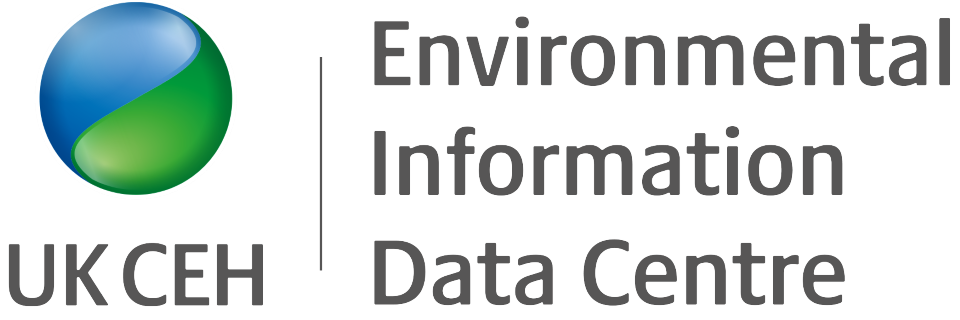
These data are held and managed by the Environmental Information Data Centre
For more details and to access the data, go to https://catalogue.ceh.ac.uk/id/bad1514f-119e-44a4-8e1e-442735bb9797
For more details and to access the data, go to https://catalogue.ceh.ac.uk/id/bad1514f-119e-44a4-8e1e-442735bb9797
Prudhomme, C. et al
Future flows climate data
(FF-HadRM3-PPE)
https://doi.org/10.5285/bad1514f-119e-44a4-8e1e-442735bb9797
Cite this dataset as:
Prudhomme, C.; Dadson, S.; Morris, D.; Williamson, J.; Goodsell, G.; Crooks, S.; Boolee, L.; Davies, H.; Buys, G.; Lafon, T. (2012). Future flows climate data. NERC Environmental Information Data Centre. https://doi.org/10.5285/bad1514f-119e-44a4-8e1e-442735bb9797
Download/Access
PLEASE NOTE:
By accessing or using this dataset, you agree to the terms of the relevant licence agreement(s). You will ensure that this dataset is cited in any publication that describes research in which the data have been used.
Licence terms and conditions apply
Download the dataBulk download options
You can use WGET to download data. For example
wget --user=YOUR_USERNAME --password=YOUR_PASSWORD --auth-no-challenge https://catalogue.ceh.ac.uk/datastore/eidchub/bad1514f-119e-44a4-8e1e-442735bb9797
Future Flows Climate (FF-HadRM3-PPE) is an eleven-member ensemble climate projection for Great Britain at a 1-km resolution spanning from 1950 to 2098. It was specifically developed for hydrological application and contain daily time series of Available Precipitation, which is the precipiated water available to hydrological processes after delays due to snow and ice storage are accounted for; and monthly reference Potential Evapotranspiration calculated using the FAO56 method. Future Flows Climate is derived from the Hadley Centre's Regional climate projection ensemble HadRM3-PPE based on 11 different variants of the regional climate model run under the SRES A1B emission scenario. HadRM3-PPE is underpinning the UKCP09 products. Bias correction and spatial downscaling were applied to the total precpitation and air temperature variables before Future Flows Climate APr and PE were generated. The development of Future Flows Climate was made during the partnership project 'Future Flows and Groundwater Levels' funded by the Environment Agency for England and Wales, Defra, UK Water Research Industry, NERC (Centre for Ecology & Hydrology and British Geological Survey) and Wallingford HydroSolutions.
Publication date: 2012-04-01
Format
netCDF
Spatial information
Study area
Spatial representation type
Raster
Spatial reference system
OSGB 1936 / British National Grid
Temporal information
Temporal extent
1950-01-01 to 2098-12-31
Provenance & quality
A modified version of the 11-member HadRM3-PPE ensemble projection assuming SRES-A1B emissions scenario developed for hydrological application in March 2012. It cover land areas of Great Britain at a 1-km resolution and contains 11 sets of 1951-2098 equally likely time series for two data types daily Available Precipitation (incorporating delays due to water storage as snow and ice) and monthly Potential Evapotranspiritation time series. Future Flows Climate used a monthly bias-correction and downscaling procedure based on the Gamma distribution (precipitation) and linear model (temperature). Potential Evapotranspiration is calculated using the FAO56 formulation with monthly bias-corrected downscaled temperature and HadRM3-PPE original time series for the other variables. As Future Flows Climate datasets are derived from climate model outputs they do not replicate the historical weather but are possible realisations of the climate. Despite the use of bias-correction and downscaling procedures Future Flows Climate might still contain some differences with observed climate and cannot be compared directly with gauged values. SC090016/PN2, SC090016/PN3 SC090016/PN5 project technical notes provide details on the methods used and results.
Licensing and constraints
Licence terms and conditions apply
Cite this dataset as:
Prudhomme, C.; Dadson, S.; Morris, D.; Williamson, J.; Goodsell, G.; Crooks, S.; Boolee, L.; Davies, H.; Buys, G.; Lafon, T. (2012). Future flows climate data. NERC Environmental Information Data Centre. https://doi.org/10.5285/bad1514f-119e-44a4-8e1e-442735bb9797
Citations
Prudhomme, C., Dadson, S., Morris, D., Williamson, J., Goodsell, G., Crooks, S., Boelee, L., Davies, H., Buys, G., Lafon, T., and Watts, G. (2012). Future Flows Climate: an ensemble of 1-km climate change projections for hydrological application in Great Britain, Earth Syst. Sci. Data, 4, 143-148. https://doi.org/10.5194/essd-4-143-2012
Elliott, J. A., Henrys, P., Tanguy, M., Cooper, J., & Maberly, S. C. (2015). Predicting the habitat expansion of the invasive roach Rutilus rutilus (Actinopterygii, Cyprinidae), in Great Britain. Hydrobiologia, 751(1), 127–134. https://doi.org/10.1007/s10750-015-2181-9
Bricker, S. H., Banks, V. J., Galik, G., Tapete, D., & Jones, R. (2017). Accounting for groundwater in future city visions. Land Use Policy, 69, 618–630. https://doi.org/10.1016/j.landusepol.2017.09.018
Roach, T., Kapelan, Z., & Ledbetter, R. (2018). A Resilience-Based Methodology for Improved Water Resources Adaptation Planning under Deep Uncertainty with Real World Application. Water Resources Management, 32(6), 2013–2031. https://doi.org/10.1007/s11269-018-1914-8
Roach, T., Kapelan, Z., & Ledbetter, R. (2015). Comparison of Info-gap and Robust Optimisation Methods for Integrated Water Resource Management under Severe Uncertainty. Procedia Engineering, 119, 874–883. https://doi.org/10.1016/j.proeng.2015.08.955
Environment Agency (2021). Climate adaptation reporting third round: Environment Agency. The UK Government. https://www.gov.uk/government/publications/climate-adaptation-reporting-third-round-environment-agency
Correspondence/contact details
Prudhomme, C.
UK Centre for Ecology & Hydrology
Benson Lane, Crowmarsh Gifford
Wallingford
OX10 8BB
enquiries@ceh.ac.uk
Wallingford
OX10 8BB
Authors
Dadson, S.
Centre for Ecology & Hydrology
Morris, D.
Centre for Ecology & Hydrology
Williamson, J.
Centre for Ecology & Hydrology
Goodsell, G.
Centre for Ecology & Hydrology
Crooks, S.
Centre for Ecology & Hydrology
Boolee, L.
Centre for Ecology & Hydrology
Davies, H.
Centre for Ecology & Hydrology
Buys, G.
Centre for Ecology & Hydrology
Lafon, T.
Centre for Ecology & Hydrology
Other contacts
Custodian
NERC EDS Environmental Information Data Centre
info@eidc.ac.uk
Publisher
NERC Environmental Information Data Centre
info@eidc.ac.uk
Originator
Additional metadata
Keywords
Last updated
03 June 2025 07:42

 https://orcid.org/0000-0003-1722-2497
https://orcid.org/0000-0003-1722-2497